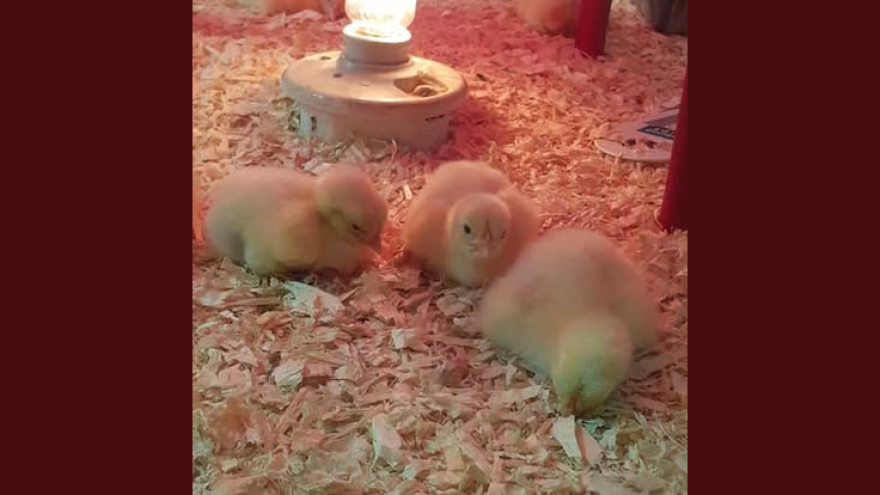ALLENTOWN, Pa. — Inside a clear-domed incubator, the pipping, or first cracks, will begin.
Once the chick uses its egg tooth to break the shell, it may make a peep or two.
For the first time since 2022, Allentown Fair attendees will have the chance to witness baby chicks hatch in real time, thanks to the Lehigh County 4-H Livestock Club.
The chick hatching experience will be open daily inside the 4-H Livestock Experience tent at the 173rd Allentown Fair, which opens today, Aug. 27, and continues through Labor Day, Monday, Sept. 1 — its earliest run since 2018.
New safety measures
The exhibition, a longstanding fair tradition, was temporarily halted after the state Agriculture Department banned poultry at fairs during an outbreak of avian flu.
The pause was meant to protect the commonwealth's $7 billion poultry industry from a loss of birds.
Now, with new safety measures in place, the chicks are back.
“This is something families look forward to every year. It’s both fun and educational — and shows where food and farming begin.”Andrea Semmel-Lazarus, a Lehigh County's 4-H Club leader
“We’re really excited,” said Andrea Semmel-Lazarus, one of four leaders of Lehigh County's 4-H Club.
“This is something families look forward to every year. It’s both fun and educational — and shows where food and farming begin.”
Lehigh Valley 4-H Club sourced two dozen fertilized eggs from Longenecker’s Hatchery in Elizabethtown, Lancaster County, a family-run facility known for its biosecurity practices.
Each batch of eggs comes with a certificate of veterinary inspection, ensuring the eggs pass agricultural safety standards.
From pip to chick
The process is slow, but captivating.
It takes 21 days of incubation at a steady 99 to 102 degrees before the chicks are ready to hatch.
For the first 18 days, the eggs must be turned several times daily to prevent the embryo from sticking to the inside of the shell.
Then, as fairgoers will see at the Allentown Fair, the real show begins.
“You can talk about farming, but when people see it for themselves — the chicks hatching, the care that goes into raising them — it leaves a lasting impression."Andrea Semmel-Lazarus, a Lehigh County's 4-H Club leader
When the first chick “pips” — breaking a small hole with its tiny egg tooth — it can take five to six hours to fully emerge.
As the hatchling chirps, the chirping can inspire other chicks to begin cracking through their hard shells.
Semmel-Lazarus said visitors can return to the incubator multiple times a day to see how far the chicks have progressed.
Once they’ve pushed free, the damp chicks stay inside the incubator until they’re dry and fluffy.
After they fluff up, they’re moved to the brooder box, a warm pen filled with bedding, heat lamps, food, and water.

That’s when the real “aww” moments happen: Clusters of fuzzy yellow chicks wobble on spindly legs, peeping for attention.
"It’s incredible to see the excitement on people’s faces,” Semmel-Lazarus said.
“Little kids, adults — it doesn’t matter. Everyone gets caught up in the moment of new life.”
At the end of the fair, the chicks will be placed with farmers who don’t already keep poultry, reducing the risk of avian flu spread.
For the 4-H Livestock Club, which typically focuses on larger animals such as sheep, goats, pigs and beef and dairy cattle, the chick project is a "bonus.”

It not only gives young members a chance to learn more about animal husbandry, but also helps the wider community connect with agriculture in an accessible, hands-on way, Semmel-Lazurus said.
“You can talk about farming, but when people see it for themselves — the chicks hatching, the care that goes into raising them — it leaves a lasting impression,” she said.


